
Édouard Manet was a French modernist painter. He was one of the first 19th-century artists to paint modern life, as well as a pivotal figure in the transition from Realism to Impressionism.

Impression, Sunrise is an 1872 painting by Claude Monet first shown at what would become known as the "Exhibition of the Impressionists" in Paris in April, 1874. The painting is credited with inspiring the name of the Impressionist movement.

Le Déjeuner sur l'herbe – originally titled Le Bain – is a large oil on canvas painting by Édouard Manet created in 1862 and 1863.
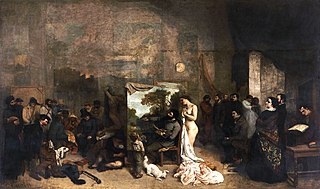
The Painter's Studio: A real allegory summing up seven years of my artistic and moral life is an 1855 oil on canvas painting by Gustave Courbet. It is located in the Musée d'Orsay in Paris, France.

The Turkish Bath is an oil painting by Jean-Auguste-Dominique Ingres, initially completed between 1852 and 1859, but modified in 1862. The painting depicts a group of nude women at a pool in a harem. It has an erotic style that evokes both the Near East and earlier western styles associated with mythological subject matter. The painting expands on a number of motifs that Ingres had explored in earlier paintings, in particular The Valpinçon Bather (1808) and La Grande odalisque (1814).
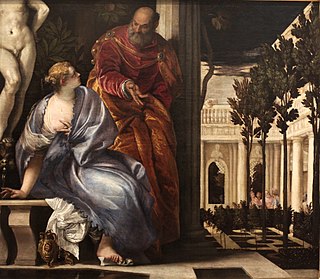
Bathsheba at her Bath is an oil-on-canvas painting by Italian Renaissance painter Paolo Veronese, dated around 1575 and now in the Musée des Beaux-Arts de Lyon, France.

The Toilette of Esther or Esther Preparing to be Presented to King Ahasuerus, is an 1841 oil-on-canvas painting by Théodore Chassériau. The painting depicts a moment from the scriptural Book of Esther, when Esther prepared to meet King Ahasuerus, ruler of Persia, who subsequently took her as his wife. The painting is in the Musée du Louvre. Vincent Pomarède of the Museum of Fine Arts of Lyon has described it as "one of the most famous (paintings) in the Louvre".

Marthe de Florian was a French demi-mondaine and socialite during the Belle Époque. She was known for having famous lovers including Georges Clemenceau, Pierre Waldeck-Rousseau, Paul Deschanel, Gaston Doumergue, Robert de Montesquiou, and Giovanni Boldini. Initially forgotten from history, her story resurfaced in 2010 after her belongings were discovered in her Parisian apartment, located at 2 square La Bruyère in the 9th arrondissement, untouched for decades. The discovery of her apartment was the inspiration behind Michelle Gable's novel A Paris Apartment.

La Promenade is an oil on canvas, early Impressionist painting by the French artist Pierre-Auguste Renoir, created in 1870. The work depicts a young couple on an excursion outside of the city, walking on a path through a woodland. Influenced by the rococo revival style during the Second Empire, Renoir's La Promenade reflects the older style and themes of eighteenth-century artists like Jean-Honoré Fragonard and Jean-Antoine Watteau. The work also shows the influence of Claude Monet on Renoir's new approach to painting.

Lise with a Parasol is an oil on canvas painting by French artist Pierre-Auguste Renoir, created in 1867 during his early Salon period. The full-length painting depicts model Lise Tréhot posing in a forest. She wears a white muslin dress and holds a black lace parasol to shade her from the sunlight, which filters down through the leaves, contrasting her face in the shadow and her body in the light, highlighting her dress rather than her face. After having several paintings rejected by the Salon, Renoir's Lise with a Parasol was finally accepted and exhibited in May 1868.
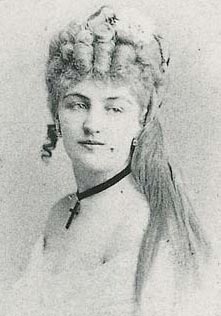
Méry Laurent, born Anne Rose Suzanne Louviot, was a demi-mondaine (courtesan) and the muse of several Parisian artists. She used to run her own “salon” where she hosted many French writers and painters of her time: Stéphane Mallarmé, Émile Zola, Marcel Proust, François Coppée, Henri Gervex, James Whistler, and Édouard Manet.

Young Ladies of the Village or The Village Maids is an 1852 oil-on-canvas painting by the French artist Gustave Courbet, now in the Metropolitan Museum of Art, in New York. It is signed bottom left "G. Courbet".

Christ on the Cross is a 1631 oil-on-canvas painting by Rembrandt, now in the Église Saint-Vincent in the French town of Le Mas-d'Agenais, Lot-et-Garonne.
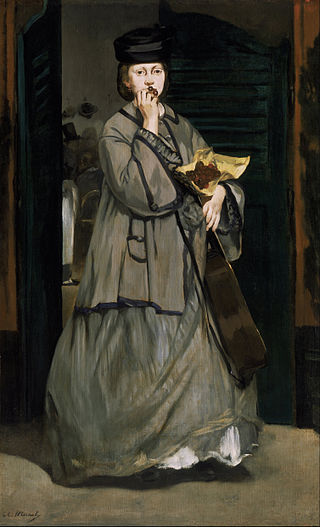
The Street Singer is an oil-on-canvas painting by Édouard Manet from 1862, depicting a female street musician standing near the entrance to a cabaret.

La Japonaise is a 1876 oil painting by the French Impressionist painter Claude Monet. Painted on a 231.8 cm × 142.3 cm canvas, the full-length portrait depicts a European woman in a red uchikake kimono standing in front of a wall decorated by Japanese fans. Monet's first wife Camille Doncieux modeled for the painting.

The Parisian Sphinx is an oil on canvas painting by Belgian painter Alfred Stevens. Painted between 1875 and 1877, it depicts a dreamy young woman gently supporting her head with her hand. The painting is part of the permanent collection of the Royal Museum of Fine Arts in Antwerp. The Parisian Sphinx shows the influence of Vermeer and the other Netherlandish old masters on Stevens, and testifies to the Symbolist influence in the latter's day. It incorporates a harmonious juxtaposition of superficial Dutch realism with the spreading Symbolist manner, as opposed to the bottom-up, pluralistic symbolism of the declining Romanticism. While well executed and apparently quite realistic, the painting has also a non-plain meaning.
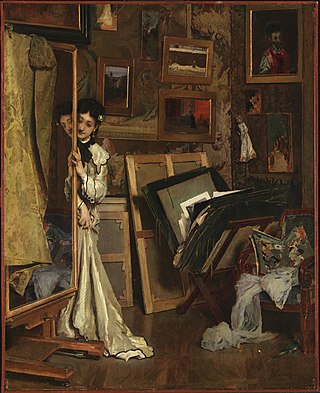
The Psyché is an oil on panel painting by the Belgian artist Alfred Stevens. Painted in circa 1871, the painting once belonged to Robert de Montesquiou, and is currently housed at the Princeton University Art Museum located in Princeton, New Jersey.
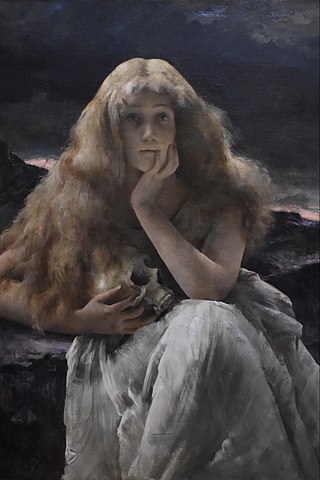
Mary Magdalene is an oil on canvas painting by Belgian painter Alfred Stevens. It is Stevens' revision of the Biblical figure of Mary Magdalene. The work has been in the collection of the Museum of Fine Arts in Ghent since 2001.
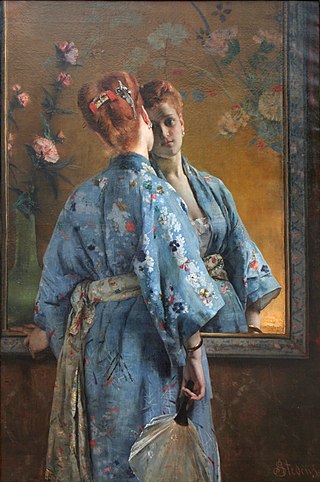
La parisienne japonaise is an oil on canvas painting by Belgian painter Alfred Stevens. It depicts a young woman in a blue kimono standing in front of a mirror. The painting testifies to Stevens' involvement with Japonisme. Stevens was one of the earliest collectors of Japanese art in Paris.

What is Called Vagrancy is an early oil on canvas painting by Belgian painter Alfred Stevens. This painting is representative of the early part of Stevens' career, when he was keen on representing the squalor of the time through realist painting.





















